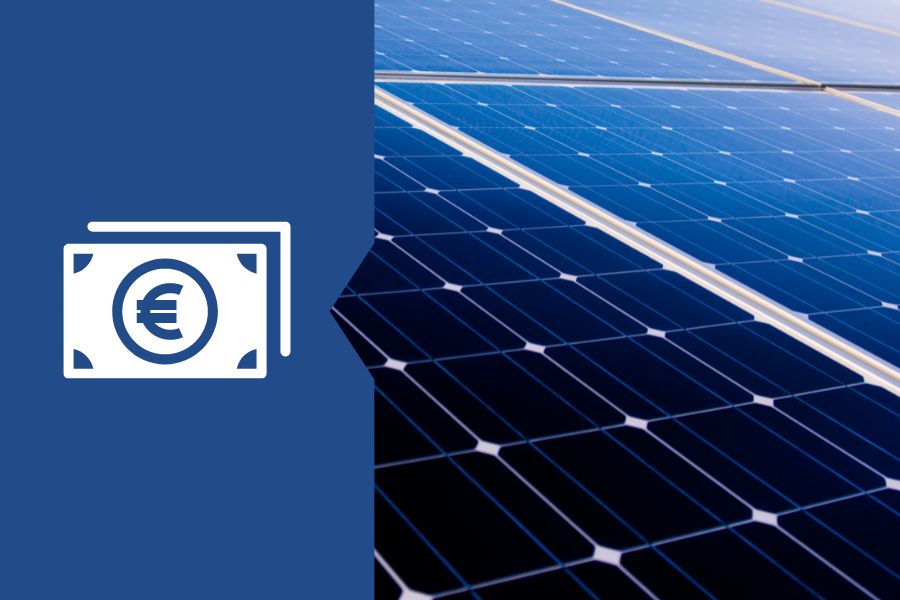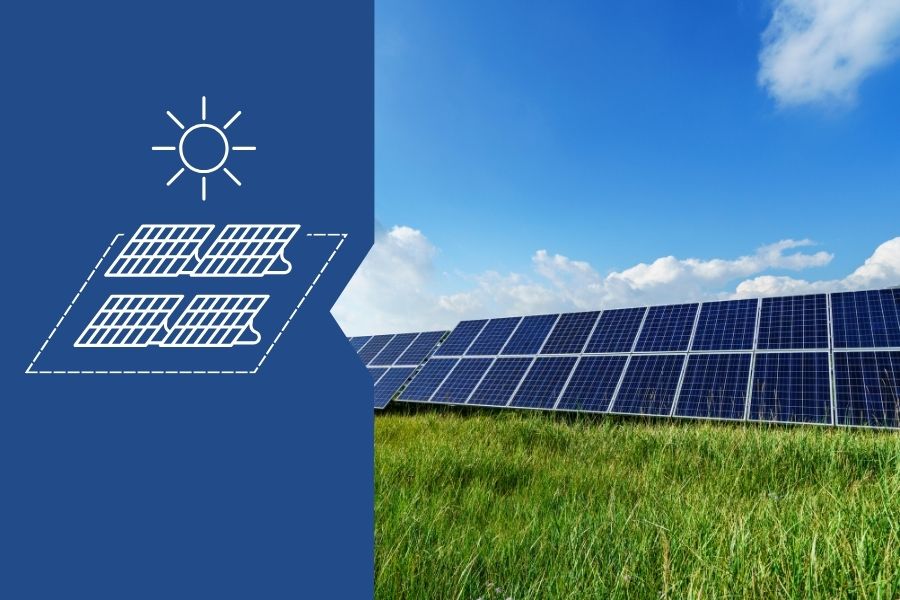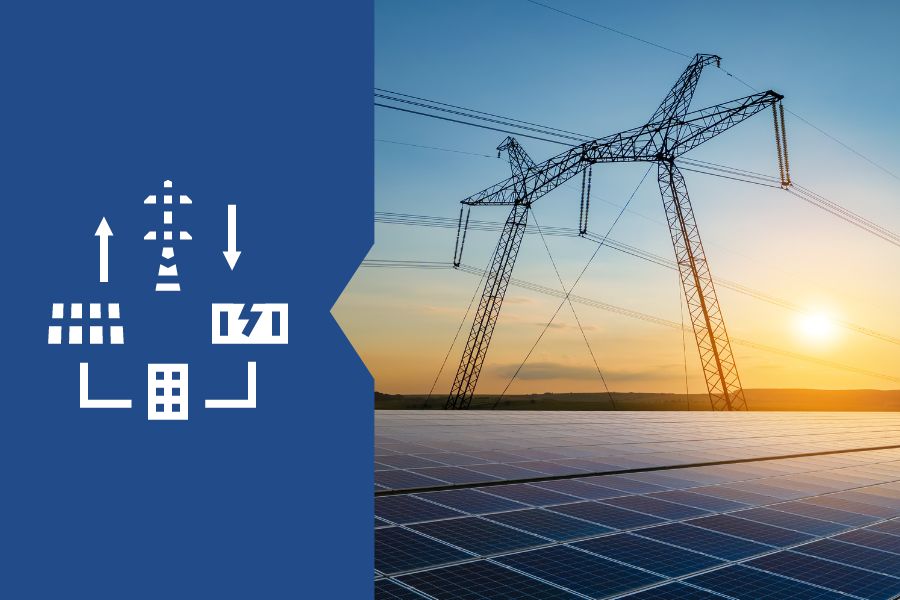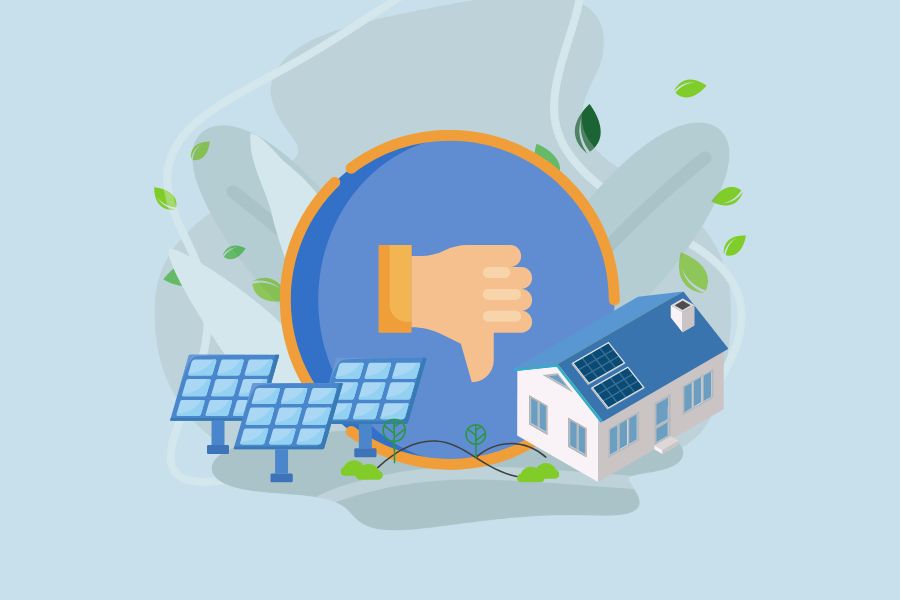While solar energy offers many benefits, it’s crucial to consider some disadvantages specific to Ireland. Issues such as inconsistent sunlight due to Ireland’s climate, the high initial cost of solar installations, and the space required for solar panels can be deterrents.
Furthermore, the complexities of grid connectivity and challenges in storing surplus solar power pose additional hurdles for potential users.
These factors make solar energy adoption in Ireland a nuanced decision, requiring careful consideration and planning.
The Top Solar Energy Disadvantages
High Initial Costs

The expenses involved in purchasing and installing solar panels can be substantial. These costs include the panels’ price, mounting hardware, inverters, wiring, and the labor required for installation.
Additionally, if energy storage systems, such as batteries, are desired, they can add further expenses to the overall installation cost.
While the initial costs may seem daunting, it is crucial to consider the long-term cost-effectiveness of solar energy systems. Solar energy can lead to significant savings on electricity bills.
As solar panels generate electricity from sunlight, they can offset or even eliminate the need for electricity from the grid. It can result in substantial savings on monthly energy expenses.
Moreover, as solar technology advances and economies of scale improve, the cost of solar panels has gradually decreased. Government incentives and subsidies are also available in many regions, further reducing the financial burden of installation. Solar energy systems can become financially viable and even provide a return on investment over their lifespan when factoring in the potential long-term savings and incentives.
Intermittent Power Generation
Solar energy’s dependence on sunlight availability means that the amount of energy produced by solar panels varies throughout the day. It is greatly affected by weather conditions.
Solar panels generate electricity when exposed to sunlight, making their productivity limited to daylight hours and significantly reduced during cloudy or nighttime periods.
Maintaining consistent energy production challenges arise from the intermittent nature of solar power. Without sunlight, solar panels cannot generate electricity, leading to fluctuations in power output.
It poses difficulties meeting constant energy demands and requires implementing backup systems or integrating energy storage solutions to ensure a steady supply.
Compared to traditional energy sources like fossil fuels or nuclear power, solar energy is renewable, emits no greenhouse gases during operation, and has no fuel costs.
However, traditional sources provide continuous power and are less susceptible to weather conditions, making them more reliable for meeting constant energy demands. Solar power complements traditional sources by reducing carbon emissions and diversifying the energy mix.
Land and Space Requirements

Solar panel installations require significant land or space to accommodate the arrays. The exact area needed depends on the panels’ number, efficiency, and desired energy output. Large-scale solar farms can cover vast expanses of land, while smaller installations, such as rooftop arrays, utilize available space on buildings.
The potential impact on ecosystems and habitats is a concern when allocating land for solar panel installations. Large-scale solar farms may require vegetation clearance or disruption of natural habitats, potentially affecting local biodiversity.
A utility-scale solar power system project, typically defined as producing over 20 MW, requires large areas of land to accommodate the solar equipment and panel rows.
Approximately 6 to 8 acres of land are needed to generate 1 MW of power. Therefore, substantial acreage is necessary to accommodate the solar infrastructure and achieve the desired energy output. It aims to achieve the larger capacity of utility-scale projects.
Careful planning and environmental assessments are necessary to mitigate these impacts and minimize ecosystem disturbance.
Solar energy requires more land than wind or hydroelectric installations but less than biomass or bioenergy projects contrasting with other renewable energy sources.
Balancing the need for clean energy with environmental considerations is essential, and exploring alternative deployment options, such as floating solar systems or utilizing previously disturbed lands, can help reduce the impact on ecosystems.
Solar Doesn’t Work for Every Roof Type
Another of solar energy disadvantages is that solar energy may not be suitable for every roof type due to various factors such as orientation, shading, structural integrity, and available space.
Some roofs may need more sunlight throughout the day, reducing solar panels’ efficiency and overall energy output.
Roofs with complex angles or obstructions can also limit the installation possibilities or increase costs for custom mounting solutions.
However, technological advancements and flexible installation methods are continually improving the adaptability of solar panels to different roof types.
Dependency on Weather Conditions
During cloudy or rainy periods, solar panels generate less electricity as a renewable energy source, impacting energy production. It requires alternative energy sources or storage systems to ensure a continuous power supply.
However, it’s worth noting that even on cloudy days, solar panels can still produce some electricity, albeit at a reduced level.
Compared to other energy sources such as fossil fuels or nuclear power, solar panels installed reliability is more dependent on weather conditions.
Traditional sources can provide consistent power output regardless of weather variations, making them more reliable for meeting constant energy demands.
However, advancements in solar technology, coupled with energy storage solutions, are improving the reliability of solar energy even during adverse weather conditions.
Energy Storage and Grid Integration

Solar energy storage is a significant challenge due to the intermittent nature of solar power generation. When solar panels produce more electricity than is immediately consumed, efficient and cost-effective energy storage systems are required. These systems store the surplus energy for later use when sunlight is unavailable, ensuring a consistent power supply.
Integrating solar power into existing electrical grids can be problematic. Solar energy is decentralized, with power generated at various locations.
Coordinating and managing the influx of solar power into the grid while maintaining stability and reliability pose technical and logistical challenges. When installing solar panels, one must upgrade or modify the grid infrastructure to handle the intermittent nature and variable output.
Progress has been made in battery technology and grid infrastructure development to address these challenges. Advances in battery storage systems, such as lithium-ion batteries, have improved energy storage capabilities and efficiency.
Manufacturing and Disposal Concerns
The production of solar panels involves using various materials and energy-intensive processes, which can have environmental impacts.
At the end of their lifespan, solar panels require proper disposal or recycling to prevent potential waste management issues.
Ensuring sustainable manufacturing practices and establishing effective recycling programs are essential for mitigating these concerns and reducing the environmental footprint of solar energy.
Energy Intensity and Scale
Solar energy has limitations regarding energy intensity and scale. Solar panels have a specific energy density, meaning they can only generate a limited amount of electricity per area unit.
It makes it challenging to achieve high power outputs when space is limited. Furthermore, scaling up solar power to meet large-scale energy demands requires significant land availability, which may only sometimes be feasible in densely populated areas.
Balancing energy requirements with available space and optimizing solar panel efficiency are essential considerations for maximizing the potential of solar energy.
Energy Return on Investment (EROI)
The energy return on investment (EROI) measures the energy output compared to the energy input required for solar energy production.
Solar power is generally considered a clean and renewable energy source. However, the EROI for certain solar technologies may be lower than traditional fossil fuel-based energy generation.
Factors such as the energy and resource intensity of manufacturing solar panels, including the extraction of raw materials, influence the overall EROI.
Continual advancements in solar technology and manufacturing processes aim to improve the EROI and make solar energy more sustainable and efficient.
Maintenance and Durability

Taking care of solar energy systems is essential to keep them running smoothly. Solar panels need regular cleaning and inspections to perform at their best and generate the most electricity possible.
Harsh weather conditions like hail, snow, or extreme temperatures can sometimes cause damage to the panels, which can affect their efficiency. That’s why choosing high-quality materials is essential, and designing solid solar systems that can withstand these environmental stresses.
By implementing proper maintenance practices and ensuring durability, we can extend the lifespan and reliability and effectively gather solar energy installations, keeping them working efficiently for a long time.
Geographic Limitations
The geographical location influences solar energy where it is harnessed. The availability and intensity of sunlight vary depending on factors like latitude, climate, and local weather patterns.
Regions closer to the equator generally receive more direct and consistent sunlight, making them more suitable for solar energy production.
Areas with less sunlight may experience reduced efficiency and viability of solar energy systems. Regions with more cloudy days or longer winters may have limited solar energy potential.
The lower sunlight exposure can decrease electricity generation and make solar energy systems less economically feasible in these regions.
It is a fact that countries in high latitudes or areas with frequent cloud cover face specific challenges regarding solar energy. In these regions, the sunlight available throughout the year is comparatively lower. Solar energy installations may need more extensive or efficient to compensate for the reduced solar resources.
Conclusion – Solar Energy Disadvantages
While solar energy has disadvantages, there is significant progress in addressing and overcoming them. You’ll be happy to know that manufacturing practices are becoming more sustainable. Proper disposal and recycling methods minimize environmental impacts.
Efforts are underway to improve energy intensity and scale, making solar power more efficient and viable even in space-constrained areas. Advances in technology aim to enhance the energy return on investment (EROI), making solar energy more competitive with traditional sources.
Prioritizing maintenance practices and durable designs helps maximize solar energy systems’ lifespan and reliability. By recognizing these challenges and working towards innovative solutions, you can harness the immense potential of solar energy and create a more sustainable future.
